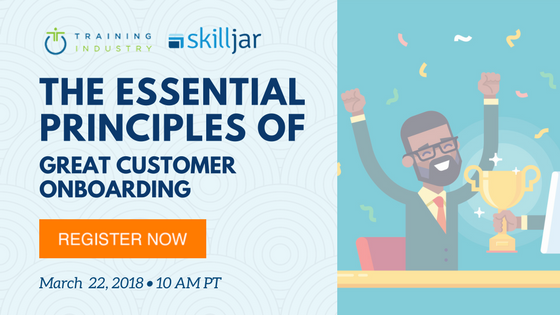.jpg?width=559&name=iStock-847032368%20(1).jpg)
We recently released the eBook "Your Guide to Creating a Customer Onboarding Program," where we discussed a simple three-step plan to create a successful onboarding program. Today's post is about the first step: assessing your needs.
Before you dive into the details of your program, take time to make an onboarding inventory. What do you already have in place, and what needs to be established? The following questions can help you determine gaps in your current strategy:
1. What barriers to success are customers facing today?
No compass to help new users: Unfortunately, most of us have had a poor onboarding experience. Maybe you signed up for a new product, logged in for the first time, and felt overwhelmed by the available features. Then when you tried to search for help, you couldn’t find what you were looking for. This happens far too often (even with fairly intuitive products).
Poor timeline: We know you’re busy. But the reality is, new users want to get started ASAP. Think about it: if you bought software on a Monday, you’d likely be annoyed if your welcome email came in that Thursday. Customers should not be left asking, “what happens now”? This leads to decreased momentum and a negative first impression.
2. How are you currently delivering content?
Webinars: In the early stages of an onboarding program, it’s common to offer product training webinars. While this tactic may work for some, others have found it is not cost effective due to low attendance and the regular effort that goes into webinar production. In addition, webinars are not interactive - customers can’t choose what they want to learn about or discuss problems they’d like to solve in real time.
1x1 training sessions: The benefit of 1x1 training sessions is that they can be personalized to meet individual needs. The downside: they’re not easy to scale as your customer base grows. Even if these sessions are live and do not take place in person, your team still needs to spend time planning and facilitating each one.
Knowledge center articles: Knowledge center articles are easy to get up and running. However, they are entirely reactive, with no ability to track customer progress and minimal engagement. They can also
be difficult for customers to navigate. As a result, your support team may still end up answering trouble tickets, and sending links to relevant results.
3. What process improvements can be made?
By increasing efficiency, you can both improve the customer experience and decrease company costs. Here are a few examples of process pain points:
- Customer Success Managers (CSMs) are spending hours on live training
- I have tons of support tickets from new customers
- It takes a long time for customers to see value
- We need to cut significant travel costs
- There’s inconsistency across the customer experience

